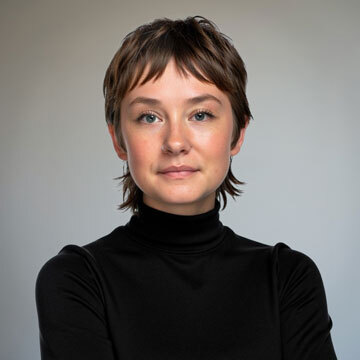387 Views
1
View In My Room
Installation, Paint on Plastic
Size: 30 W x 30 H x 0.2 D cm
Ships in a Box
387 Views
1
Artist Recognition

Artist featured in a collection
ABOUT THE ARTWORK
DETAILS AND DIMENSIONS
SHIPPING AND RETURNS
Yurii Yermolenko, Couple Of The Future, (ultraviolet lighting), 2019, (GOLDILOCKS ZONE project), fluorescent acrylic on vinyl, 30x30 cm. People say we are a couple of the future. You can’t define us, and we don’t make sense. We used to be a couple that was easier to define but not nobody really u...
Year Created:
2019
Subject:
Mediums:
Installation, Paint on Plastic
Rarity:
One-of-a-kind Artwork
Size:
30 W x 30 H x 0.2 D cm
Ready to Hang:
Not Applicable
Frame:
Not Framed
Authenticity:
Certificate is Included
Packaging:
Ships in a Box
Delivery Cost:
Shipping is included in price.
Delivery Time:
Typically 5-7 business days for domestic shipments, 10-14 business days for international shipments.
Returns:
14-day return policy. Visit our help section for more information.
Handling:
Ships in a box. Artists are responsible for packaging and adhering to Saatchi Art’s packaging guidelines.
Ships From:
Ukraine.
Customs:
Shipments from Ukraine may experience delays due to country's regulations for exporting valuable artworks.
Need more information?
Need more information?
Yurii Yermolenko
Ukraine
Yurii Yermolenko – A Master of Fine Arts (MFA), author of special, large-scale, monumental picturesque projects, set designer, art director (musical video), music video director, photographer, Facevinyl & RapanStudio Founder and CEO. Born in 1973 Kiev (Ukraine) Lives and works in Kiev. "LIVE PAINTING" One will never forget works painted by artist Yurii Yermolenko. They carry a rave of color, flexibility of motifs, and a very special reality. - Yurii, how long have you been living for painting? Creation of a painting, the plot, the canvas – is this an outburst of emotions, or reflection of your world outlook? - I believe that I began to live for painting even before I was born. The birth of a painting on canvass most of all resembles a rite, when you are led by some creative ecstasy, intuition. It should be noted however that the period preceding the creation of a painting is very interesting. Here, an entirely different scheme works, involving a great deal of analysis, collection of information, anthropological studies, maybe, travelling. - Your paintings are distinguished for intense colors. Does this reflect your temper, or the desire to add colors to everyday routine? - In the first place, it reflects my temper of an artist and a painter. When you paint a picture, it should sound in colors, as a good musical composition, this is the main thing. - You have a unique technique of execution – the images are smudgy and distinct at a time. What stands behind it? - I like it when a painting represents a deep picturesque space, full of special light, as if in a dream, in which, images can breathe and vibrate. - Who, or what, inspires you? - My dear muse, my angel of inspiration protects and helps me. And as far as the projects are concerned, they may be triggered by a beautiful dream or a journey. - What really encourages you – criticism, or commendation? - I am encouraged not by criticism or commendation, but by angels of inspiration. Criticism or commendation take place post factum, as a response to a work of art; both are helpful; the worst thing is when there is no response at all. - Please, tell us about your creative plans. - I will continue experimenting with techniques. By the way, my another project was a pure experiment with "flower-dotted" fabric – this decorative pattern dictates the figurative space. MAGIC WOMAN magazine, Culture (section)
Artist Recognition

Artist featured by Saatchi Art in a collection
Why Saatchi Art?
Thousands of
5-Star Reviews
We deliver world-class customer service to all of our art buyers.
Global Selection of Original Art
Explore an unparalleled artwork selection from around the world.
Satisfaction Guaranteed
Our 14-day satisfaction guarantee allows you to buy with confidence.
Support Emerging Artists
We pay our artists more on every sale than other galleries.
